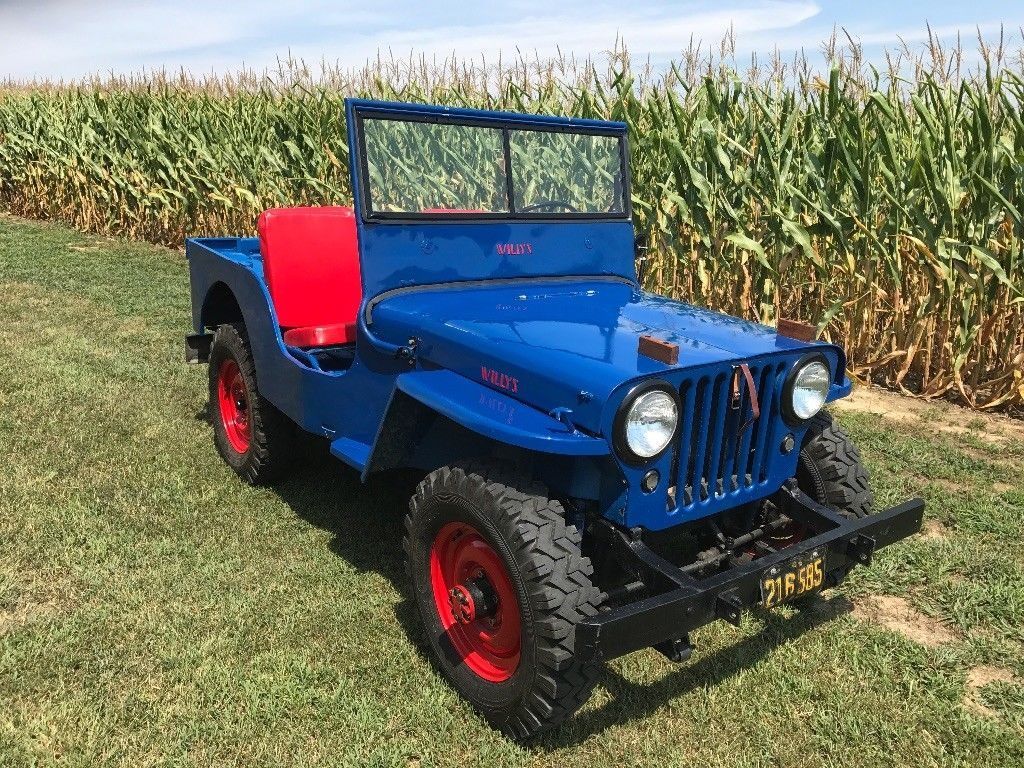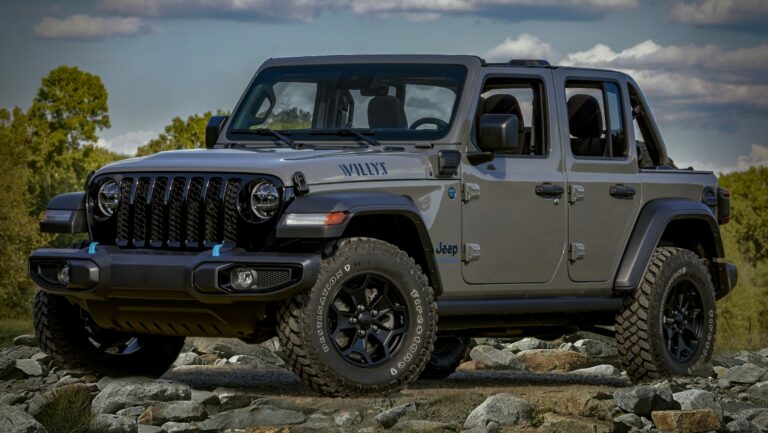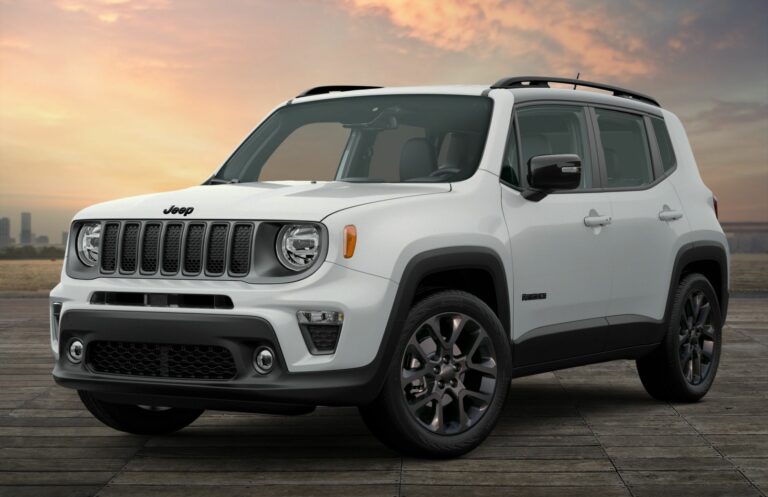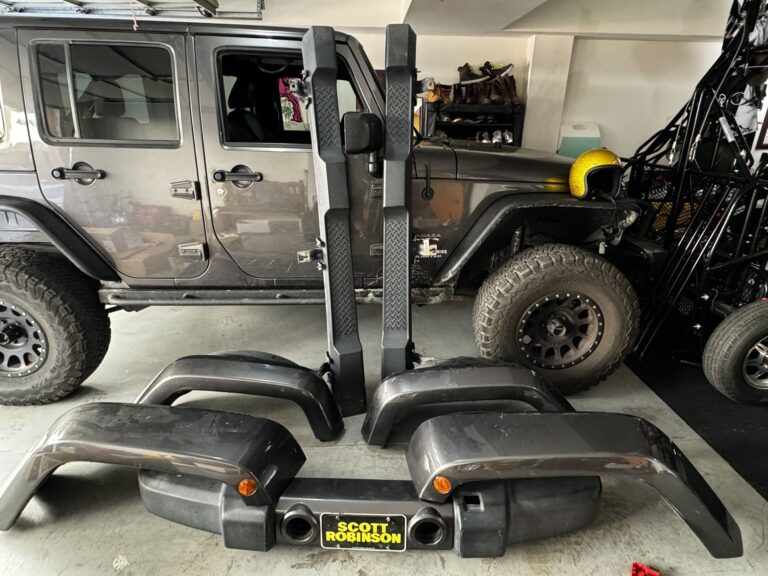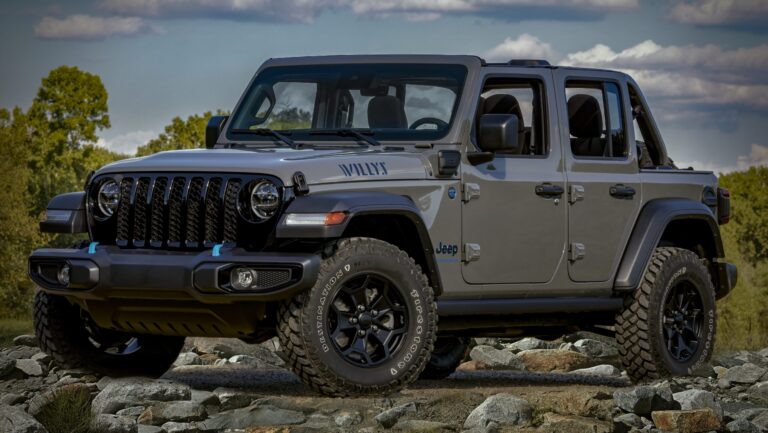1946 Willys Jeep CJ-2A For Sale: A Comprehensive Buyer’s Guide
1946 Willys Jeep CJ-2A For Sale: A Comprehensive Buyer’s Guide jeeps.truckstrend.com
The 1946 Willys Jeep CJ-2A stands as a monument to post-war American ingenuity, a rugged and iconic vehicle that seamlessly transitioned from military workhorse to civilian utility champion. More than just a car, it’s a piece of living history, embodying the spirit of resilience and practical innovation that defined an era. For enthusiasts and collectors, the prospect of finding a "1946 Willys Jeep CJ-2A for sale" isn’t just about acquiring a vehicle; it’s about owning a legend, a tangible link to a time when versatility and durability were paramount. This article serves as your definitive guide, exploring everything from its historical significance to practical buying tips, ensuring you’re well-equipped to navigate the market for this timeless classic.
The Legacy of the CJ-2A: From Battlefield to Farmstead
1946 Willys Jeep CJ-2A For Sale: A Comprehensive Buyer’s Guide
Emerging directly from the legendary wartime MB and Ford GPW military Jeeps, the Willys CJ-2A (Civilian Jeep, 2nd version after the limited CJ-1) was the first mass-produced civilian Jeep. Willys-Overland wasted no time capitalizing on the Jeep’s heroic reputation, introducing the CJ-2A in 1945. While retaining the core robust mechanics of its military predecessor, the CJ-2A incorporated several key modifications to suit civilian life.
Distinguishing features included a tailgate (a revolutionary addition for utility), larger headlights for better visibility, a side-mounted spare tire, and a host of agricultural and industrial accessories via power take-off (PTO) units. Its flat-fender design, open-top versatility, and legendary "Go-Devil" L-134 flathead four-cylinder engine made it an instant hit with farmers, construction workers, and adventurers alike. The 1946 model year represents one of the earliest and most authentic iterations of this post-war icon, often sought after for its direct lineage to the military Jeeps and its pure, unadulterated form.
Why Buy a 1946 Willys Jeep CJ-2A Today?
The appeal of a 1946 Willys Jeep CJ-2A for sale extends far beyond mere transportation. It’s an emotional and practical investment for various reasons:
- Classic Appeal & Nostalgia: Owning a CJ-2A is a direct connection to a pivotal moment in history. Its unmistakable silhouette and rugged charm evoke a sense of adventure and simpler times. It’s a guaranteed head-turner at any car show or on any backroad.
- Simplicity & Maintainability: Unlike modern vehicles laden with complex electronics, the CJ-2A is refreshingly straightforward. Its mechanical systems are basic, robust, and relatively easy to understand and repair for the mechanically inclined. This "nuts and bolts" simplicity makes it a joy to work on and maintain.
- Investment Potential: Well-maintained, original, or professionally restored CJ-2As have shown a steady appreciation in value over the years. They are not just toys; they can be valuable assets, particularly those with good provenance and condition.
- Versatility: While it won’t win any speed races, the CJ-2A remains incredibly capable off-road. Its compact size, high ground clearance, and robust 4×4 system make it surprisingly adept on trails, farms, or for light utility tasks. It’s also perfect for parades, beach trips, or simply cruising around town.
- Community: The Willys Jeep community is vibrant and supportive. Owners share a common passion, offering a wealth of knowledge, parts sources, and camaraderie.
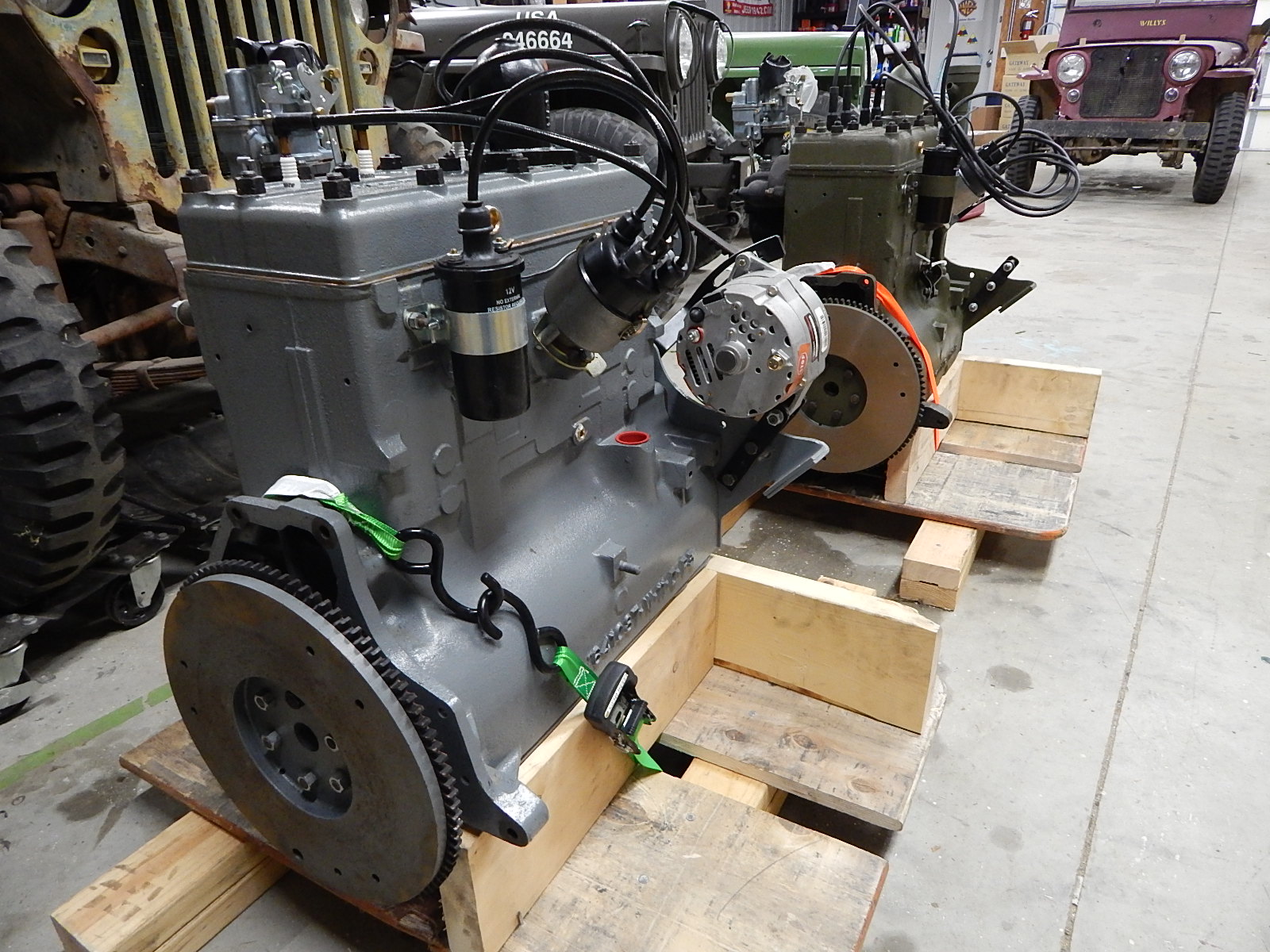
What to Look For When Buying a 1946 CJ-2A
Finding the right 1946 Willys Jeep CJ-2A for sale requires a keen eye and a methodical approach. Here’s what to prioritize during your inspection:

- Frame & Body Condition: Rust is the primary enemy of any vintage vehicle, and the CJ-2A is no exception. Pay close attention to the frame rails, hat channels (under the floorboards), cross members, spring hangers, and body tubs (especially floorboards, inner fenders, and cowl areas). Look for excessive patching, bondo, or signs of major collision repair. A solid frame is paramount.
- Engine (Go-Devil L-134): The legendary 134 cu in (2.2 L) L-head "Go-Devil" engine is known for its durability. Check for excessive smoke from the exhaust (blue for oil, white for coolant, black for rich fuel), unusual knocking sounds, and significant oil leaks. A compression test can reveal internal wear. Inquire about rebuild history.
- Drivetrain (T-90 Transmission, Spicer 18 Transfer Case, Dana Axles): Shift through all gears (including reverse) while stationary and during a test drive. Listen for grinding or difficulty engaging gears. Check for leaks around the transmission, transfer case, and axle differentials. Ensure the 4WD system engages smoothly and holds.
- Electrical System: Most 1946 CJ-2As came with a 6-volt positive ground system. Many have been converted to 12-volt negative ground for easier starting and accessory compatibility. Understand which system is present and check the wiring for brittle insulation, splices, or fire hazards. Test all lights, gauges, and the horn.
- Brakes & Steering: The CJ-2A uses drum brakes on all four wheels. Check for proper stopping power, pulling to one side, or spongy pedal feel. Inspect brake lines for corrosion. For steering, check for excessive play in the steering wheel and linkages. Worn kingpins are a common issue that causes sloppy steering.
- Originality vs. Modifications: Decide whether you want a highly original, numbers-matching vehicle or one that has been modified for modern convenience (e.g., 12V conversion, power steering, disc brakes). Originality often commands a higher price, but a well-executed modification can enhance usability.
- Documentation: A clear title is essential. Look for any service records, ownership history, or original manuals that add value and provide insight into the vehicle’s past.

The Buying Process: Tips for a Successful Purchase
Navigating the market for a 1946 Willys Jeep CJ-2A for sale requires patience and due diligence.
- Research Thoroughly: Understand market values based on condition, originality, and location. Join online forums and groups dedicated to Willys Jeeps to learn about common issues and restoration tips.
- Inspect in Person: Never buy sight unseen. If possible, bring a friend knowledgeable about vintage Jeeps or hire a pre-purchase inspector. Get under the vehicle to inspect the frame and drivetrain.
- Test Drive: A thorough test drive is crucial. Listen for unusual noises, feel for vibrations, and test acceleration and braking. Engage 4WD (low and high range) to ensure it works properly. Pay attention to how it handles on different surfaces.
- Pricing & Negotiation: Be realistic about the price based on your inspection. Condition is key. Don’t be afraid to negotiate, but also understand that a truly excellent example will command a premium.
- Where to Look:
- Online Marketplaces: eBay Motors, Hemmings, Bring a Trailer, ClassicCars.com, Craigslist (be cautious).
- Specialty Dealers: Classic car dealerships often have restored or well-maintained examples.
- Willys Jeep Forums & Clubs: Many enthusiasts sell directly within their communities.
- Auctions: Live and online auctions can offer good finds but require quick decision-making and often have buyer’s premiums.
Owning and Maintaining Your CJ-2A
Owning a 1946 Willys Jeep CJ-2A is a rewarding experience, but it comes with specific maintenance considerations:
- Basic Maintenance is Key: Regular oil changes (every 1,000-2,000 miles), greasing all lubrication points (especially kingpins, tie rod ends, and U-joints), checking fluid levels (engine oil, transmission, transfer case, differentials, brake fluid), and inspecting belts and hoses will ensure longevity.
- Parts Availability: Fortunately, the popularity of the CJ-2A means that most parts are readily available. Several reputable aftermarket suppliers specialize in reproduction and NOS (New Old Stock) parts for these vehicles. Willys Overland Motors (now Kaiser Willys) and other dedicated suppliers are excellent resources.
- Common Issues: Be prepared for minor oil leaks (they’re vintage, after all!), worn suspension components, and occasional electrical gremlins. Rust prevention is an ongoing battle, especially if the vehicle is exposed to elements.
- Optional Upgrades: While purists prefer originality, many owners opt for practical upgrades like a 12-volt electrical conversion (for brighter lights and easier starting), electronic ignition, a more modern carburetor, or even disc brake conversions for improved stopping power. Consider how these impact the vehicle’s historical authenticity and value.
- Insurance & Registration: Standard auto insurance may not be suitable. Look into classic car insurance providers who understand the unique value and usage patterns of collector vehicles. Registration requirements vary by state but typically require a clear title.
Challenges and Solutions
- Rust: The biggest enemy. Solution: Thorough pre-purchase inspection, regular cleaning, proper storage (indoors, dry), and addressing any rust spots immediately. Professional bodywork is expensive but essential for severe cases.
- Finding Original Parts: While reproduction parts are plentiful, truly original components can be scarce. Solution: Network with other enthusiasts, attend swap meets, and regularly check specialist online suppliers.
- Reliability Expectations: It’s a 78-year-old vehicle; it won’t have the reliability of a modern car. Solution: Embrace it as a hobby. Learn basic mechanics, carry a small tool kit, and enjoy the tinkering. Preventative maintenance is crucial.
- Driving in Modern Traffic: Lack of power, manual steering, drum brakes, and no modern safety features can make driving in heavy traffic challenging. Solution: Drive defensively, avoid high-speed highways, and choose scenic routes. Consider brake and steering upgrades if you plan frequent road use.
1946 Willys Jeep CJ-2A Estimated Price Guide
The price of a 1946 Willys Jeep CJ-2A can vary significantly based on its condition, originality, and any modifications. This table provides a general estimate:
| Condition Category | Estimated Price Range (USD) | Description |
|---|---|---|
| Poor / Project | $5,000 – $10,000 | Significant rust, non-running engine, major mechanical issues, incomplete. Requires extensive restoration. |
| Fair / Driver | $10,000 – $18,000 | Running and drivable but needs considerable work. Visible rust, worn interior, tired paint, minor mechanical issues. Functional but not pretty. |
| Good | $18,000 – $25,000 | Solid mechanicals, minimal rust, presentable paint (older repaint possible), functional interior. Can be driven regularly with confidence. May need some cosmetic or minor mechanical attention. |
| Excellent | $25,000 – $35,000 | Well-maintained or older restoration. Very little rust, strong running engine, clean interior, good paint. Close to original appearance or well-executed sympathetic modifications. Ready for shows and drives. |
| Concours / Show | $35,000 – $50,000+ | Professional, frame-off restoration to original specifications. Immaculate condition, correct parts, show-quality paint, and interior. Often numbers-matching. Top-tier collector vehicle. |
Note: These are estimates and market conditions, location, and specific vehicle history can influence actual prices.
Frequently Asked Questions (FAQ) about the 1946 Willys Jeep CJ-2A
Q: Is it hard to find parts for a CJ-2A?
A: No, surprisingly, parts availability for the CJ-2A is excellent. Many specialized vendors offer reproduction parts, and used/NOS parts can be found through enthusiast communities and swap meets.
Q: Can a CJ-2A be driven daily?
A: While mechanically capable, a 1946 CJ-2A is generally not recommended for daily driving in modern traffic due to its slow speed, lack of safety features, and manual steering/brakes. It’s best suited for recreational use, light utility, or as a weekend cruiser.
Q: What’s the main difference between a CJ-2A and a military Jeep (MB/GPW)?
A: Key differences include the CJ-2A’s tailgate, larger headlights, side-mounted spare tire (vs. rear-mounted on military), civilian gauges, and a focus on agricultural/industrial attachments (PTO). Military Jeeps had blackout lights, specific military markings, and different seating.
Q: Is the 6-volt electrical system reliable?
A: A properly maintained 6-volt system is reliable, but it requires clean connections, a good battery, and a healthy generator. Many owners convert to 12-volt for brighter lights, easier cold starts, and compatibility with modern accessories.
Q: What’s the fuel economy like?
A: The CJ-2A’s "Go-Devil" engine is not particularly fuel-efficient by modern standards. Expect anywhere from 15-20 miles per gallon, depending on driving conditions and vehicle tune.
Q: Are they safe?
A: Compared to modern vehicles, the CJ-2A lacks almost all contemporary safety features (airbags, crumple zones, seatbelts, ABS, power steering, etc.). Drivers must be extra vigilant and drive defensively.
Conclusion
The allure of a 1946 Willys Jeep CJ-2A for sale is undeniable. It represents a simpler time, a testament to robust engineering, and a vehicle that played a pivotal role in shaping post-war America. Acquiring one is more than just a purchase; it’s an adoption of history, a commitment to classic motoring, and an entry into a passionate community. While the journey of finding and maintaining your ideal CJ-2A requires diligence and a realistic understanding of vintage vehicle ownership, the rewards—the open-air freedom, the admiring glances, and the tangible connection to a legendary past—make it an extraordinarily worthwhile endeavor. Embark on your search with knowledge and enthusiasm, and you’ll soon be enjoying the timeless charm of this true American icon.

